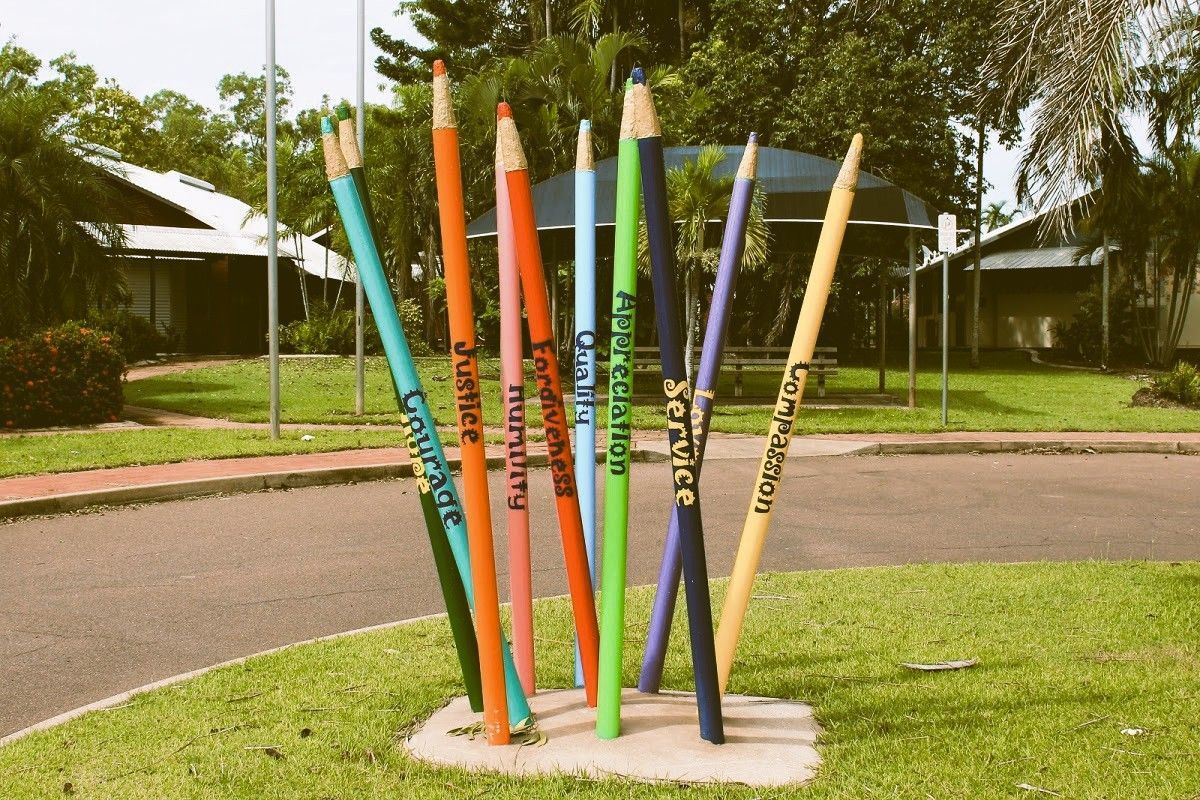The River Red Gum an Icon For A School Principal
Eucalyptus Camaldulensis, the River Red Gum, would have to be the most iconic of Australia’s trees and perhaps the best known of the more than 800 species of Eucalypts found in Australia. We all know they are mighty trees, which in the arid prevalence of our landscape, defy the obvious lack of water which is so much part of Australia. They are an impressive example of survival, are sculptured as muscular and majestic but produce such beautiful, delicate flowers and on close observation present a variegated and very captivating bark. They are to people and animals, in the arid parts of our nation, a true symbol and indeed lighthouse of hope as they so often position themselves along water courses, even when there is no visible water.
And they are an excellent analogy for Principals, who dedicate their lives to the art and mystery of learning. The stately trunk, with twisted branches and their impressive, majestic canopy of leaves, is the source of welcome shade to both people and other living creatures, which exist under the sting of a ruthless sun. These trees would not survive without a huge root structure penetrating deep within the soil and fanning out somewhat. This subterranean wonder is lead diligently by a mighty tap root as the roots, no matter what their size, collectively search for the life blood of all - water.
And so Principals, as they lead and develop their schools, realise that careful, creative, wise and effective development will not take place without nourishment regardless of how hard it is to find, support, inspire and perhaps insist. For without nourishment the leaves of the school will start to dull, brown and curl and like a river gum, which is deprived of the necessary water and will therefore lose its beauty, majesty and effectiveness. This point is sometimes lost on non-educators, which is why I consider such people are not ideal to lead a school.
Of course poor or pointless input achieves nothing and is more likely to generate a negative response amongst staff. As a Principal you are keenly aware of your staff with a true interest in them producing their best. It may be that some staff have access to professional development more than others. Those that are in the deficit column may have been overlooked or may not want any input. Both situations should be of concern to a Principal and warrant following up directly or through a staff member’s supervisor. It is easier to not follow it up but the leaves of the school will, as a result, start to dull. It is always of value to discuss with the staff member or with their supervisor on how the input went. The concern is that if the leaves of the school do dull, reputation may deteriorate and students could be lost. The abilities of your staff are so valuable. The roots of a River Gum, though they travel deep, may fail to reach water in a bad drought and the effect on this becomes obvious. Avoid having a professional development drought in your school!
Back to the River Red Gum Tap Root. The root wanders deep into the ground searching for water, which if found, will be a welcome supply for the tree. If the tap root doesn’t go deep enough the tree will not thrive. So it is with Professional Development. If it is superficial, lacking depth of thought or relevance staff, will not embrace it and will see the PD as a waste of their precious time. If it is well targeted and has depth, then it is likely to be welcomed and hopefully is able to be used for good in the school.
Years ago I was hitchhiking around New Zealand and was stuck beside the road, somewhere on the Canterbury Plains for several hours, hoping for a passing car to give me a lift. I tend to be more of the hyperactive type (then?) and was finding the long wait uncomfortable. My eyes and my mind searched desperately for entertainment and eventually settled on the trunk of the tree under which I lounged. It was the bark that caught my attention. An initial glance revealed not much more than a grey to white colour. But almost relishing some time on my hands, I commenced examining it in close detail. The colour suddenly broke into many subtle but appealing hues. Ants and other little creatures appeared busy with the days vital duties. There were certainly imperfections but these caused an appreciation of the unique creation of that particular tree.
I have never forgotten that forced, contemplative experience and even today, when in the bush, will leap out of the car to observe and often photograph the bark of a particular tree which in Alice is probably a River Red Gum. And so it is with our observation of pupils and indeed teachers - observe closer and be interested and perhaps helpful details will reveal themselves. But, they won’t if you don’t look! I think this is such an important message to pass onto teachers and indeed students. The superficial glance or indeed knowledge is unlikely to tell the real story and so much of importance will be missed. This can lead to unfairly judging a person and perhaps teaching them ineffectively.
I’ll now divert away from the River Red Gum to Test Cricket. I usually take a keen interest in Test Cricket and the First Test held in Edgbaston England over the last five days produced many thought provoking lessons. The first: it takes courage to try something new, but if the possible outcome is to be worthwhile, then the difficulties to be faced introducing it are worth overcoming. During this Test the English tackled the game in a revolutionary way for Test cricket though the origins of this style were to be found in the One Day or T20 form of the game. The English Team termed it “Bazball”. I thought it was well thought out, though England did just lose. However, as intended, the English approach was significantly responsible for producing a very entertaining 5 day game. Making the game more entertaining was a major reason for the new approach. So in a school if you can see that a change is needed and is definitely well thought out and worthwhile, have the courage to make it so long as you plan it carefully, wisely and introduce it with all the sensitivities required.
The second message from the Test comes from the final partnership between Captain Pat Cummins and Spinner Nathan Lyon. Neither are top order batsmen. They had 54 runs to make with only two wickets in hand. Like me, I would guess most Aussie cricket followers thought this was nigh on impossible. But with careful thought, determination, calm, taking the challenge step at a time, positively reinforcing each other and undeniably a bit of luck, they did it. In schools we often face big challenges and applying the above process can really help to produce an effective outcome.
Running a school is always challenging particularly as it is important to keep moving intelligently forward. To decide that there is nothing more to improve is definitely, dangerously kidding yourself and the old adage “if you are not going forward you are going backwards will come into play”. This is to be avoided!
SAYINGS FOR THE WEEK.
1. I was singing a traditional Irish folk song called “Spancil Hill” by Michael Considine. During the song he writes in verse 1, “I stepped on board a vision and I followed with the wind”. I thought this could be used in a variety of ways.
2. “I destroy my enemies when I make them my friends.”- Abraham Lincoln
3. “The way I see it, if you want the rainbow , you have to put up with the rain.” - Dolly Parton.
4. “A person who never made a mistake never tried anything new.” - Albert Einstein.
5. “Life is what happens when you’re busy making other plans.”- John Lennon.
6. “There is only one certainty in life and that is that nothing is certain.”- G.K. Chesterton. (He wrote “Father Brown”)
7. “You can’t cross the sea merely by standing and staring at the water.”- Ravindranath Tagore. ( He was a Bengali poet, writer, playwright, composer, philosopher , social reformer and painter . He lived 1861-1941).
8. “Some cause happiness wherever they go; others whenever they go.” - Oscar Wilde.
9. “The smallest act of kindness is worth more than the greatest intention.”- Khalil Gibran who wrote “The Prophet”.
10. Two from Plato: “Writing is the geometry of the soul”. “Necessity is the mother of invention.”
Written by Chris Tudor



